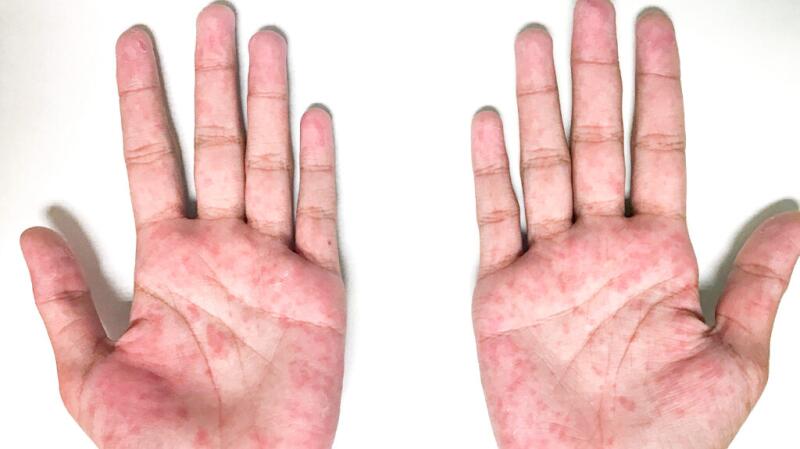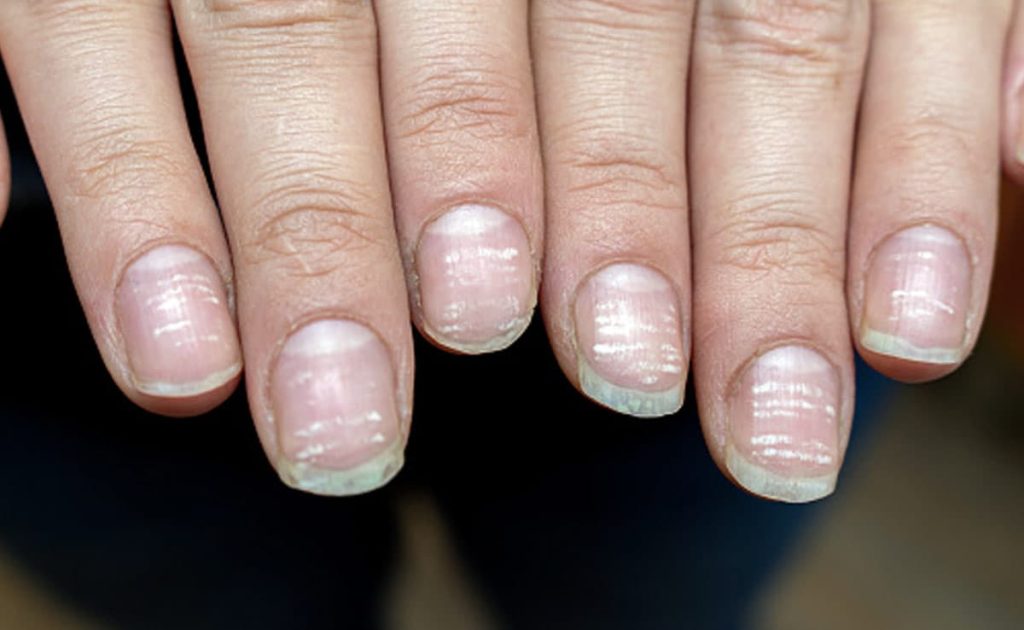Our hands are not only essential tools for daily tasks but also serve as indicators of our overall health. Changes in their appearance, sensation, or function can signal underlying medical conditions that may require attention. Recognizing these signs can lead to early diagnosis and treatment, potentially preventing more serious health issues.
1. Reddened Palms (Palmar Erythema)
Reddening of the palms, known as palmar erythema, can be a symptom of various conditions. It is often associated with liver diseases, such as cirrhosis, due to altered hormone levels affecting blood vessels. Additionally, palmar erythema can occur during pregnancy or as a result of rheumatoid arthritis. If you notice persistent redness in your palms without an obvious cause, it’s advisable to consult a healthcare professional for evaluation.

2. Hand Rashes
The appearance of rashes on the hands can result from contact dermatitis, an allergic reaction to substances like nickel found in jewelry or personal items. This condition leads to redness, itching, and sometimes blisters. Another potential cause is atopic dermatitis (eczema), which often presents with dry, itchy patches and can be triggered by environmental factors or stress. Identifying and avoiding allergens, along with proper skincare, can help manage these conditions.
3. Finger Clubbing
Finger clubbing involves the enlargement of fingertips and a downward curvature of the nails. This change can be indicative of chronic low oxygen levels in the blood, often linked to lung diseases like chronic obstructive pulmonary disease (COPD) or lung cancer. Heart conditions, such as congenital heart defects or endocarditis, can also cause clubbing. If you observe these changes, seeking medical advice is crucial to determine the underlying cause.
4. Joint Pain and Swelling
Persistent stiffness, swelling, or pain in the hand joints may signal inflammatory conditions like rheumatoid arthritis or psoriatic arthritis. These autoimmune diseases cause the immune system to attack joint tissues, leading to discomfort and potential deformities. Early diagnosis and treatment are essential to manage symptoms and prevent joint damage.
5. Hand Tremors
Occasional hand tremors can occur due to factors like caffeine intake, stress, or fatigue. However, persistent or worsening tremors might indicate neurological conditions such as Parkinson’s disease, which affects movement control. Essential tremor, a nervous system disorder, can also cause rhythmic shaking, primarily in the hands. Consulting a neurologist can help determine the cause and appropriate management.
6. Numbness and Tingling
Experiencing numbness or tingling in the hands can result from nerve compression or damage. Carpal tunnel syndrome, caused by pressure on the median nerve in the wrist, leads to these sensations and may affect grip strength. Peripheral neuropathy, often associated with diabetes, can also cause similar symptoms due to nerve damage. Medical evaluation is necessary to identify the cause and initiate treatment.
7. Purple or Blue Fingertips
Discoloration of the fingertips to a purple or blue hue can indicate cyanosis, a sign of inadequate oxygenation in the blood. This may result from respiratory issues, cardiovascular problems, or circulatory disorders like Raynaud’s phenomenon, where blood flow to extremities is reduced. Observing such changes warrants prompt medical attention to address potential underlying causes.
8. Nail Abnormalities
Changes in nail appearance can reflect systemic health issues. For instance, spoon-shaped nails (koilonychia) may suggest iron-deficiency anemia, while pitting or ridges could be linked to psoriasis or other skin conditions. Clubbing of the nails, as mentioned earlier, can be associated with lung and heart diseases. Monitoring nail health and seeking medical advice for abnormalities can aid in early detection of health problems.

9. Weak Grip Strength
A noticeable decrease in grip strength can be a sign of conditions like osteoarthritis, which leads to joint degeneration and reduced hand function. Additionally, studies have linked weak handgrip to cardiovascular diseases, suggesting it may be a marker for overall muscle strength and heart health. Incorporating hand exercises and addressing underlying health issues can help improve grip strength.
10. Cold Hands
Frequently cold hands can result from environmental factors or indicate circulatory issues. Raynaud’s phenomenon causes blood vessels in the fingers to constrict excessively in response to cold or stress, leading to cold and discolored fingers. Ensuring proper hand warmth and managing stress can alleviate symptoms, but persistent cases should be evaluated by a healthcare provider.
11. Swollen Fingers
Swelling in the fingers, or dactylitis, can occur due to fluid retention, often from high salt intake or hormonal changes. However, it can also be a symptom of inflammatory conditions like psoriatic arthritis or infections. Persistent or painful swelling should be assessed to determine the underlying cause and appropriate treatment.
In conclusion, our hands can reveal significant insights into our health. Paying attention to changes in color, sensation, strength, and appearance can aid in the early detection of various medical conditions. Regular consultation with healthcare professionals upon noticing such changes ensures timely diagnosis and management, contributing to overall well-being.

















